SDH recommendation was standardized by ITU-T (G.707 and G.708):
• G.707: Synchronous Digital Bit Rate;
• G.708: Network Node Interface for the Synchronous Digital Hierarchy.
Found in SDH flows at 155, 622 and 2488 Mbit/s SONET.
Base time always corresponds to 8000 frames per second, each frame consisting of nine times 270 bytes. In total, this makes 155.520 Mbit/s. The structure of the SDH synchronous frame is illustrated in Figure.
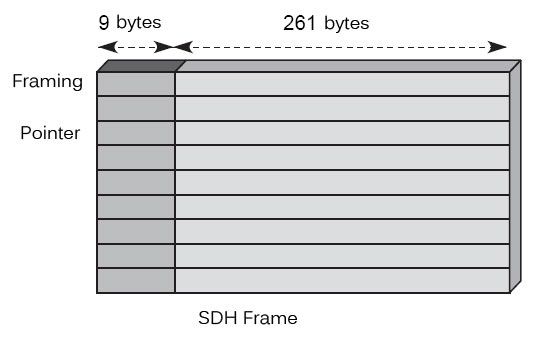
The information conveyed is indicated by a pointer that is in the frame supervisory area. When the amount of information to be transported is greater than the area available in the SDH frame, it continues in the next frame, the end being indicated by an end pointer.
Figure shows how a flow at 140 Mbit/s can be transported over an SDH link 155 Mbit/s (a 140 Mbit/s rate is 8 times 261 bytes plus 100 bytes, corresponding to the shaded area of the Figure).
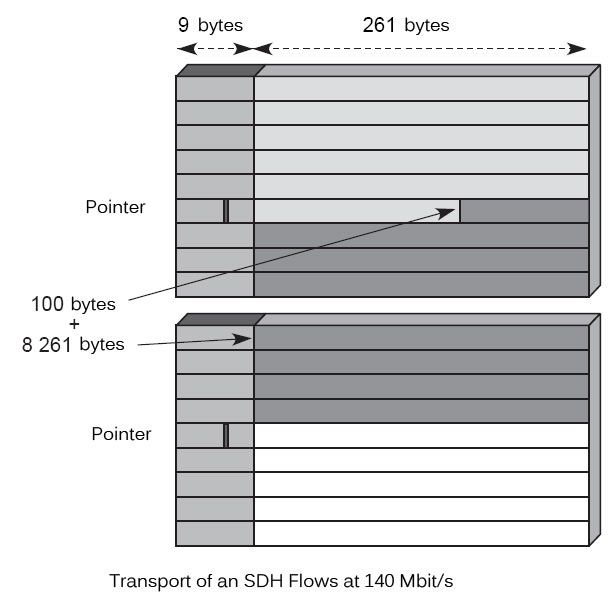
The ATM cells are transported in the SDH frame as soon as possible. We must lose a minimum of time during transmission on each link to ensure that the variance of the cell response time increases too.
Figure shows the transport cells to a basic SDH link: cells are located anywhere, and they are reported in the SOH area or in the frame because no time should be wasted waiting a particular slot.
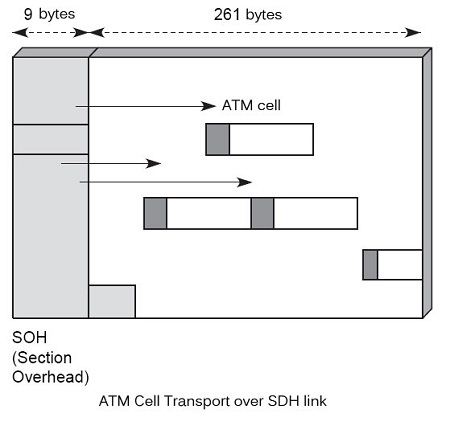
SDH base frame is called the STM-1 (Synchronous Transport Module level 1). It is equivalent to STS-4 of the SONET recommendation. SDH ITU-T is summarized in Table.
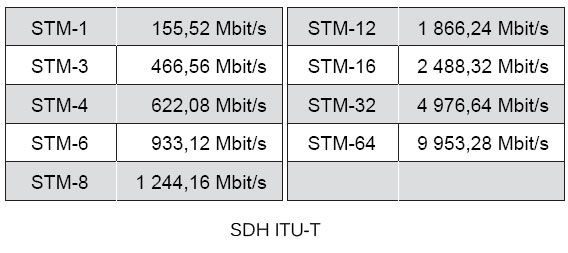
The signals to be transported from links, which may be synchronous or asynchronous. For easier transport, it accumulates in a virtual container VC (Virtual Container), as we have already seen for SONET recommendation. This packaging is called adaptation. There are different virtual containers for each type of signal being transmitted.
Standard SDH links are three in number, corresponding to STM-1, STM-4 and STM-16. The basic frame is multiplied by 4 in the second case and by 16 in the third. This corresponds to speeds of 622 Mbit/s and 2.488 Gbit/s (OC-12 and OC-48 levels SONET). The virtual containers for these levels are VC-4 and VC-16. Transporting the containers on the STM-4 and STM-frame 6 is effected by a time-division multiplexing, as shown in Figure, wherein 4 VC-4 frame is cut and interleaved byte by byte.
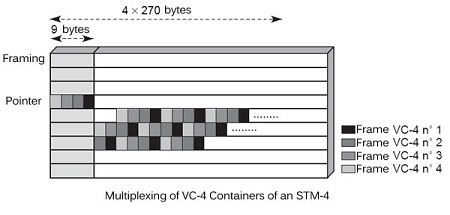
Like SONET, the contents of the container with pointers form an administrative unit, or AU (Administrative Unit). The administrative units are of several levels: AT-1, AT-4 and AU-16. The STM-16 level is formed from four STM-4, which are interlaced on the physical medium.
Europe, ETSI has defined European size under C-12 names, C-3 and C-4, which correspond to values of containers. Intermediate formats, called TU (Tributary Unit) and TUG (Tributary Unit Groups), complete the hierarchy. This somewhat complex hierarchy is shown in Figure.
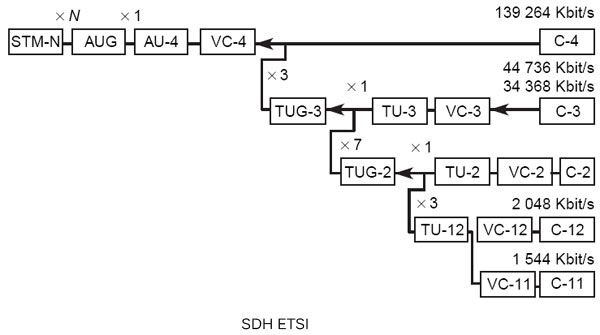
 Dinesh Thakur holds an B.C.A, MCDBA, MCSD certifications. Dinesh authors the hugely popular
Dinesh Thakur holds an B.C.A, MCDBA, MCSD certifications. Dinesh authors the hugely popular